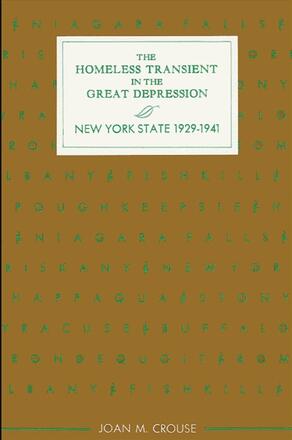
The Homeless Transient in the Great Depression
New York State, 1929-1941
Alternative formats available from:
Description
Years before the Dust Bowl exodus raised America's conscience to the plight of its migratory citzenry, an estimated one to two million homeless, unemployed Americans were traversing the country, searching for permanent community. Often mistaken for bums, tramps, hoboes or migratory laborers, these transients were a new breed of educated, highly employable men and women uprooted from their middle- and working-class homes by an unprecedented economic crisis. The Homeless Transient in the Great Depression investigates this population and the problems they faced in an America caught between a poor law past and a social welfare future.
The story of the transient is told from the perspective of the federal, state, and local governments, and from the viewpoint of the social worker, the community, and the transient. In narrowing the focus of the study from the national to the state level, Joan Crouse offers a close and sensitive examination of each. The choice of New York as a focal point provides an important balance to previous literature on migrancy by shifting attention from the Southwest to the Northeast and from a preoccupation with rejection on the federal level to the concerted effort of the state to deal with the non-resident poor in a humane yet fiscally responsible manner.
Reviews
"A first-rate piece of work that makes significant scholarly contributions. It is not only an important piece of social history for the depression decade, but has considerable implications for the present day when transient problems are still with us. " — Frank Freidel, University of Washington
"It is solid, clearly written and usefully fills in a piece of welfare policy history which remains interesting and significant. The author has searched diligently, found the relevant material, made the appropriate connections. " — Alfred J. Kahn, Columbia University School of Social Work